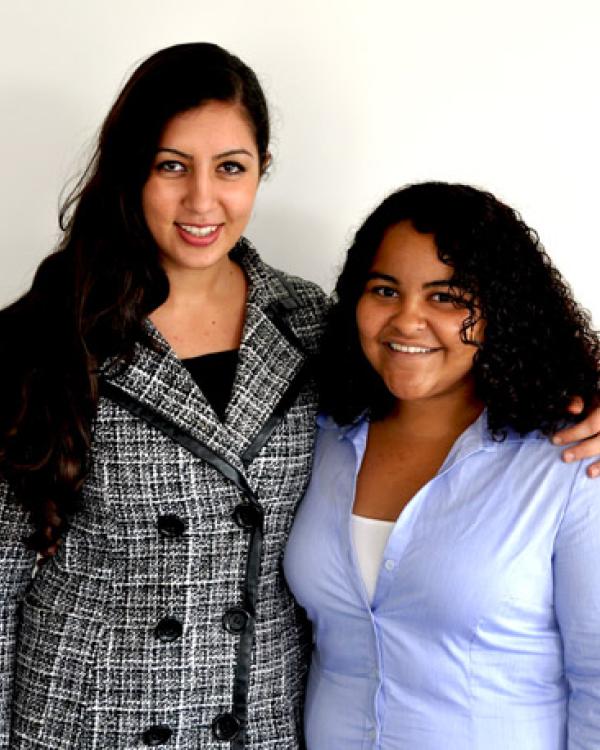
Nanor Balabanian and Allyson Miller.
Nanor Balabanian and Allyson Miller, the two nominees from the Teacher Education Program at UC Santa Barbara’s Gevirtz School, have been chosen as winners of the 2012 Woodrow Wilson-Rockefeller Brothers Fund Fellowship for Aspiring Teachers of Color (WW-RBF). Balabanian is majoring in political science and double-minoring in education and professional writing and is very passionate about studying the role of technology and mass communication in bringing development and change in society. Miller is a black studies major with a minor in education and she aspires to be an English teacher. UCSB’s Gevirtz School was one of only four education programs in the country to have both of their nominees receive the fellowships. This is the second year in a row that both nominees from the Gevirtz School’s Teacher Education Program were awarded the fellowships.
The 25 WW-RBF Fellows were chosen through a competitive selection process and will receive a $30,000 stipend to complete a master’s degree in education, preparation to teach in a high-need public school, support throughout a three-year teaching commitment, and guidance toward teaching certification. Each Fellow was nominated by one of the program’s 48 nominating institutions and 29 graduate education programs.
Established in 1992 by the Rockefeller Brothers Fund, the Fellowships for Aspiring Teachers of Color were created to help recruit, support, and retain individuals of color as public education teachers and administrators. Since the program’s inception, it has awarded nearly $8 million in grants and financial assistance to 375 Fellows. In January 2009, RBF transferred the program to the Woodrow Wilson Foundation following a national review of potential host organizations.
“The Foundation is pleased to add this impressive group of young and promising teachers to its national network of outstanding teachers and scholars,” said Bill Dandridge, program officer and director of the WW-RBF Fellowships for Aspiring Teachers of Color. “Their desire to serve children in the nation’s most challenging schools and communities is an important reason to be hopeful about the future of our public schools.”